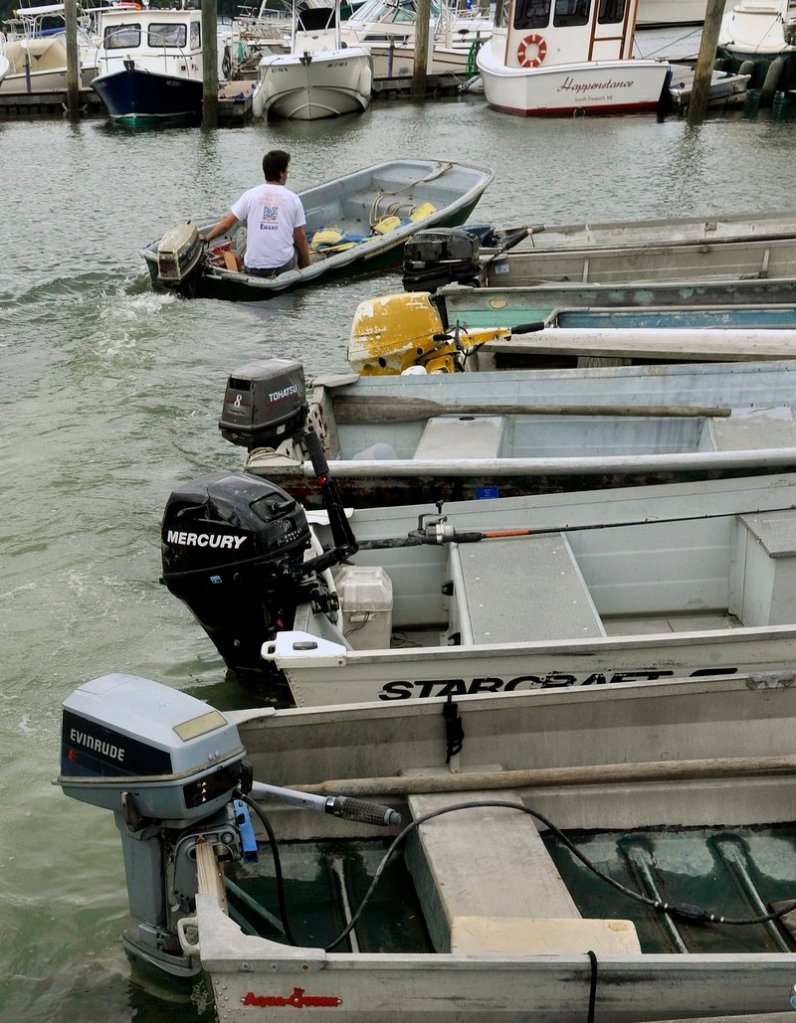BOSTON – Recreational saltwater boating contributed $3.5 billion to the Northeast’s economy last year and supported the equivalent of 27,000 jobs, according to a new study on the reach of a historical but underanalyzed industry.
The findings highlight the economic power of the 374,000 recreational boaters along the region’s coast as local ocean development appears poised to accelerate. Aquaculture pens, wind farms and offshore utility lines are examples of the existing or proposed ocean uses, and boaters want a voice about such projects in waters they share.
Since the survey ties significant jobs and economic growth to boating, that can expand the industry’s influence, said Grant Westerson, head of the Connecticut Marine Trades Association in Essex, Conn.
“If we can show that boating returns to the state a lot more money than it had anticipated, then they’ll listen to us a little more,” he said.
Local harbors are filled with vessels from sloops to cigarette boats, and boats have been critical to the Northeast’s commerce and leisure since they carried the first settlers to shore. Despite the historical foothold, there’s little data about recreational saltwater boaters, such as the routes they take to get where they’re going and how much they spend when they get there.
That data gap became a potential liability as various interests sought a voice in implementing President Obama’s national ocean policy, which aims to create a balanced approach to ocean use.
About 12,000 randomly selected boaters participated in the survey, conducted between May and October 2012 by the nonprofit ocean research group SeaPlan, the Northeast Region al Ocean Council, state coastal planners, private industry and the First Coast Guard District.
The survey estimated local boaters made 907,000 marine recreational boating trips in 2012, contributing $3.5 billion total to the economies of the coastal Northeast states surveyed, from Maine to New York. That’s roughly equal to the domestic seafood industry’s economic impact in 2012 dollars in those six states, according to federal statistics from 2009, adjusted for inflation.
Boaters spent an average of about $1,150 on boating trips last year (including about $200 at restaurants) and more than $7,000 just visiting, docking and maintaining their vessel.
The study indicates boating supported 27,000 jobs across several sectors, with leisure and hospitality (7,700) and trade, transportation and utilities (6,700) the top two.
Andy Lipsky, SeaPlan’s director of policy, noted the study may significantly understate boating’s impact since it leaves out boat sales and boats registered in inland counties.
“It’s not perfect,” he said of the study. “But it’s a good start.”
The survey required boaters to record their travels on an online map. The map showed boating activity at 4,600 spots, along with the routes people took to get there. That means developers planning an offshore project along the coast, for instance, can see if the area is heavily traveled by boaters now and avoid potential conflicts, Lipsky said.
“(The survey) helps boaters see themselves and use that information to advocate for their interests, but it also provides important data information for other ocean users, so they can make better decisions,” he said.
Fishing — mainly for striped bass — was the dominant activity for boaters in every state except Maine, where wildlife viewing and relaxing was more popular.
The study’s demographic data showed more than 90 percent of boaters are male and average 59.4 years old. Nearly 57 percent of boaters make more than $100,000 annually. About 22 percent make $75,000 or less.
The survey indicates most boaters were generally confident they can coexist with various ocean uses. For instance, 58 percent thought it was “somewhat to very likely” that they could still enjoy boating near offshore wind turbines.
Artist Martin Mugar, 64, of Durham, N.H., who took the survey, began boating at summer camp as a kid and now owns a 25-foot sailboat.
He said boating has a culture that participants enjoy but is also part of the region’s draw. When tourists headed to the Isle of Shoals pass by, “I’m part of the scenery,” he said.Press Herald file
A man moves his dinghy from the town dock in South Freeport on July 26. Fishing — mainly for stripers — was the dominant activity for boaters in every Northeast state except Maine, where wildlife viewing and relaxing was more popular.
Send questions/comments to the editors.



Success. Please wait for the page to reload. If the page does not reload within 5 seconds, please refresh the page.
Enter your email and password to access comments.
Hi, to comment on stories you must . This profile is in addition to your subscription and website login.
Already have a commenting profile? .
Invalid username/password.
Please check your email to confirm and complete your registration.
Only subscribers are eligible to post comments. Please subscribe or login first for digital access. Here’s why.
Use the form below to reset your password. When you've submitted your account email, we will send an email with a reset code.